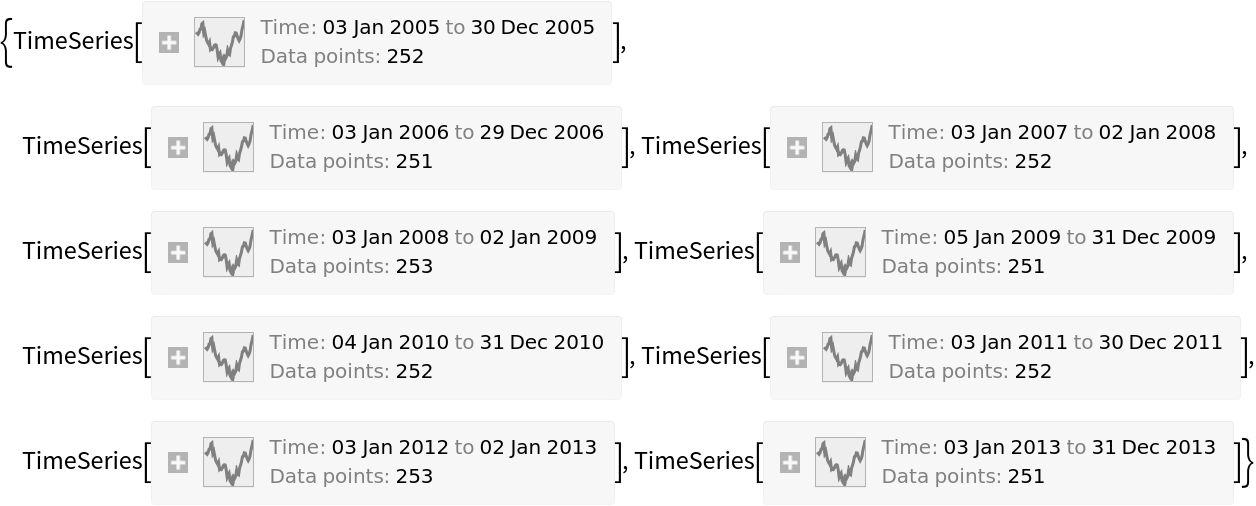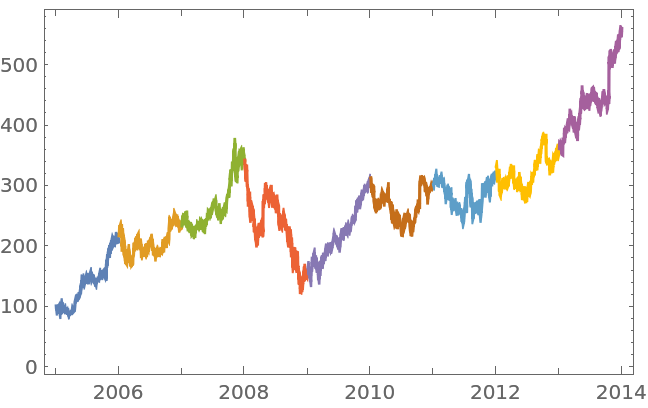Wolfram Function Repository
Instant-use add-on functions for the Wolfram Language
Function Repository Resource:
Partition a time series into non-overlapping segments
ResourceFunction["TimeSeriesPartition"][ts,dt] partitions ts into a list of non-overlapping segments of window width dt. |
Divide a time series of 15 elements into elements 1–5, 6–10 and 11–15:
| In[1]:= |
![v = {2, 1, 6, 5, 7, 4};
t = {1, 2, 5, 10, 12, 15};
ts = TimeSeries[v, {t}];
ResourceFunction["TimeSeriesPartition"][ts, 5]](https://www.wolframcloud.com/obj/resourcesystem/images/444/44442af0-3239-48ed-a644-f1326ec6fbb7/017b0311c2f5c6ba.png)
|
| Out[1]= |
|
Partition a financial time series into annual segments:
| In[2]:= |
|
| In[3]:= |
|
| Out[3]= |

|
Show the annual segments in different colors:
| In[4]:= |
|
| Out[4]= |

|
TimeSeriesPartition is designed for TemporalData rather than simple List-like data:
| In[5]:= |
|
| Out[5]= |
|
Partition can be employed to deal with more generic List-like data:
| In[6]:= |
|
| Out[6]= |
|
This work is licensed under a Creative Commons Attribution 4.0 International License